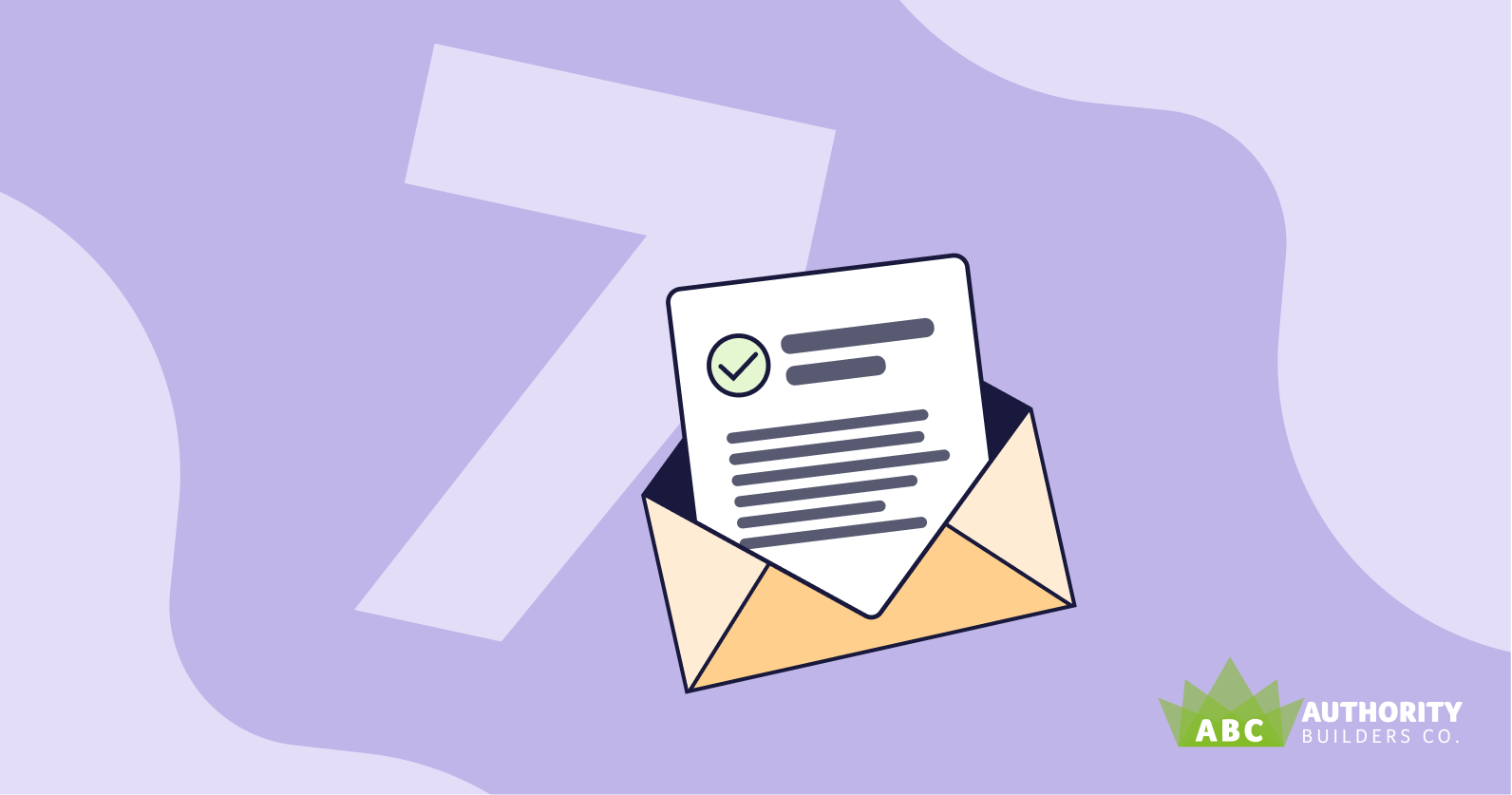
Email campaigns are very effective when it comes to fundraising. In 2021, the open rates of fundraising emails went up by 26%. Also, email campaigns are more personal compared to social media and blog content marketing.
So fundraising emails act as great mediators, calling people to take moral, life-changing actions (such as giving donations).
Below are some fundraising email best practices to follow for a successful fundraising email campaign.
1. Write eye-catching subject lines
You won’t be able to ask for donations if your email recipients don’t read your emails. An email subject is the first thing your recipients see from your email. So if you want to increase your open rate, you should carefully craft your subject lines. This will be the first step toward an effective fundraising email campaign.
Use short fundraising email subject lines. Eye-catching subject lines are brief, allowing a prospective donor to see it at a glance.
Don’t reveal everything in your email subject line. Provide just enough details to pique the recipient’s interest. That should trigger them to open your email to learn more. The email subject shown below is short and intriguing — a subject line approach you should copy.
Use email marketing software to personalise your subject lines. When potential donors see their name or something personal on a subject line, they feel they’re being addressed personally.
You may also want to delegate a key employee’s email address, e.g., the CEO or project manager, to your email marketing team. Use their company email address to send your fundraising emails. This will show recipients that the emails are from a real person.
For instance, the earlier example shows one Dr. Lisa Searle sent the fundraising email instead of MSF as a whole.
Short and personalised email subjects will improve your email open rate. This allows you to meet fundraising goals quicker.
2. Segment your email subscribers
Email list segmentation is one of the most effective ways to boost your fundraising campaigns. It allows you to group your email list into several categories based on shared interests or attributes. You can then target each segment with personalised email content, appealing to their unique attributes. That results in higher engagements and click-throughs.
You can segment your email list by net worth, brand engagement, and other qualities that may be important to you. You may ask for these details on your website forms (i.e., Have you donated to any charities before?). You can also analyse your existing donor list for common attributes and place them in different email segments.
The Wikimedia Foundation (the nonprofit responsible for Wikipedia) has different email approaches to previous donors and non-donors. This is a valuable distinction to make when addressing email subscribers.
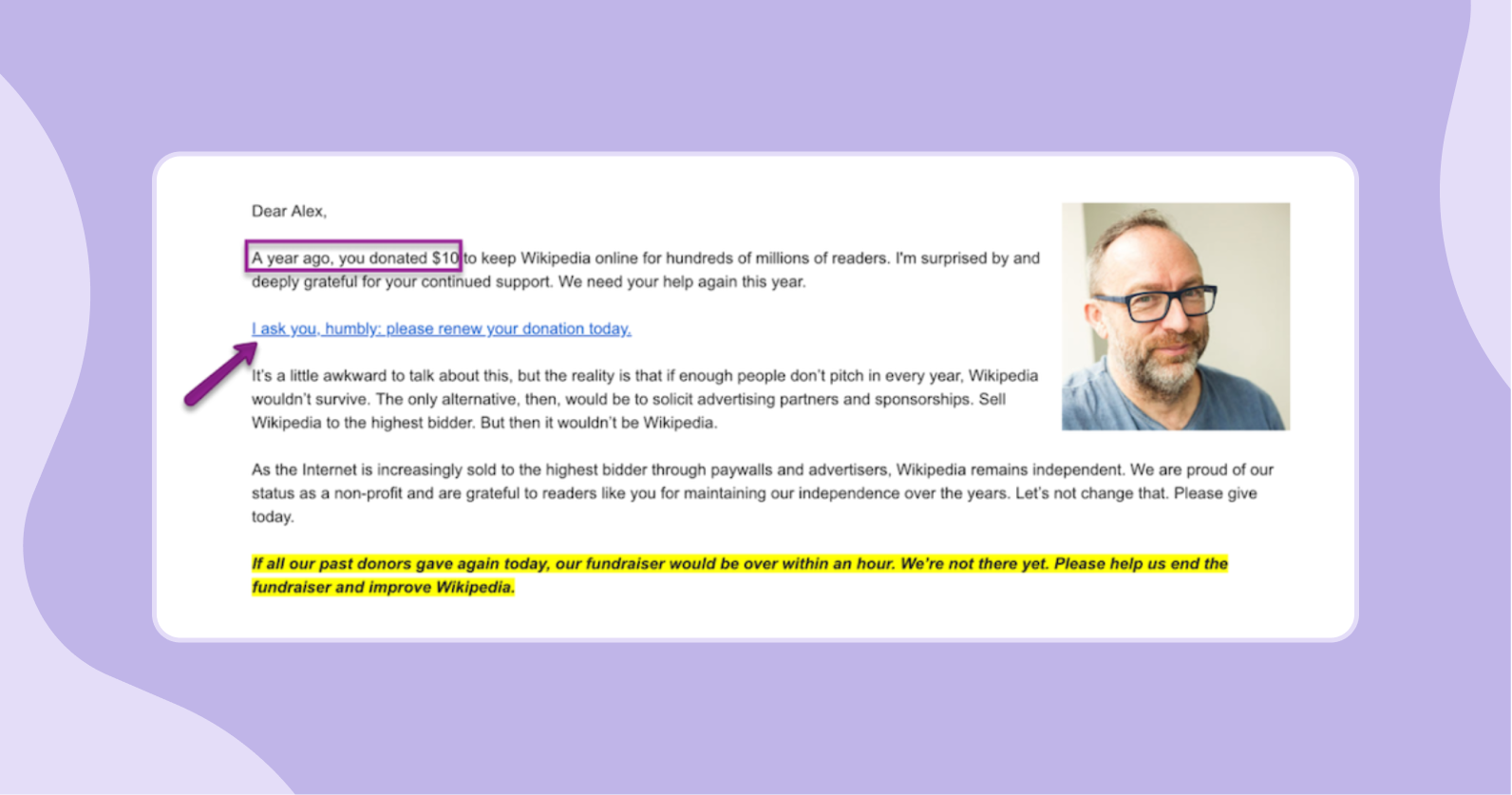
Wikimedia acknowledged the recipient’s previous donation. If Alex hadn’t donated before, Wikimedia might say something like, “Hey, Alex. As you know, we provide the world with free, accessible knowledge. We humbly ask for a small donation so everyone can continue to enjoy access to factual information...”
Practice proper email segmentation so you may send relevant email blasts for each email list segment.
3. Focus on your content
In addition to donation drives, prepare valuable content for your subscribers. These may be in the form of an impactful story, an awareness drive, or other relevant news. Remember the primary cause of your nonprofit. If you want to change the world, your email campaign should reflect that.
Some nonprofit content ideas include expert advice pieces, case studies, blog posts, and mission reports.
Doctors Without Borders provides curated content to their email subscribers. These come along with reports on current issues, as shown below.
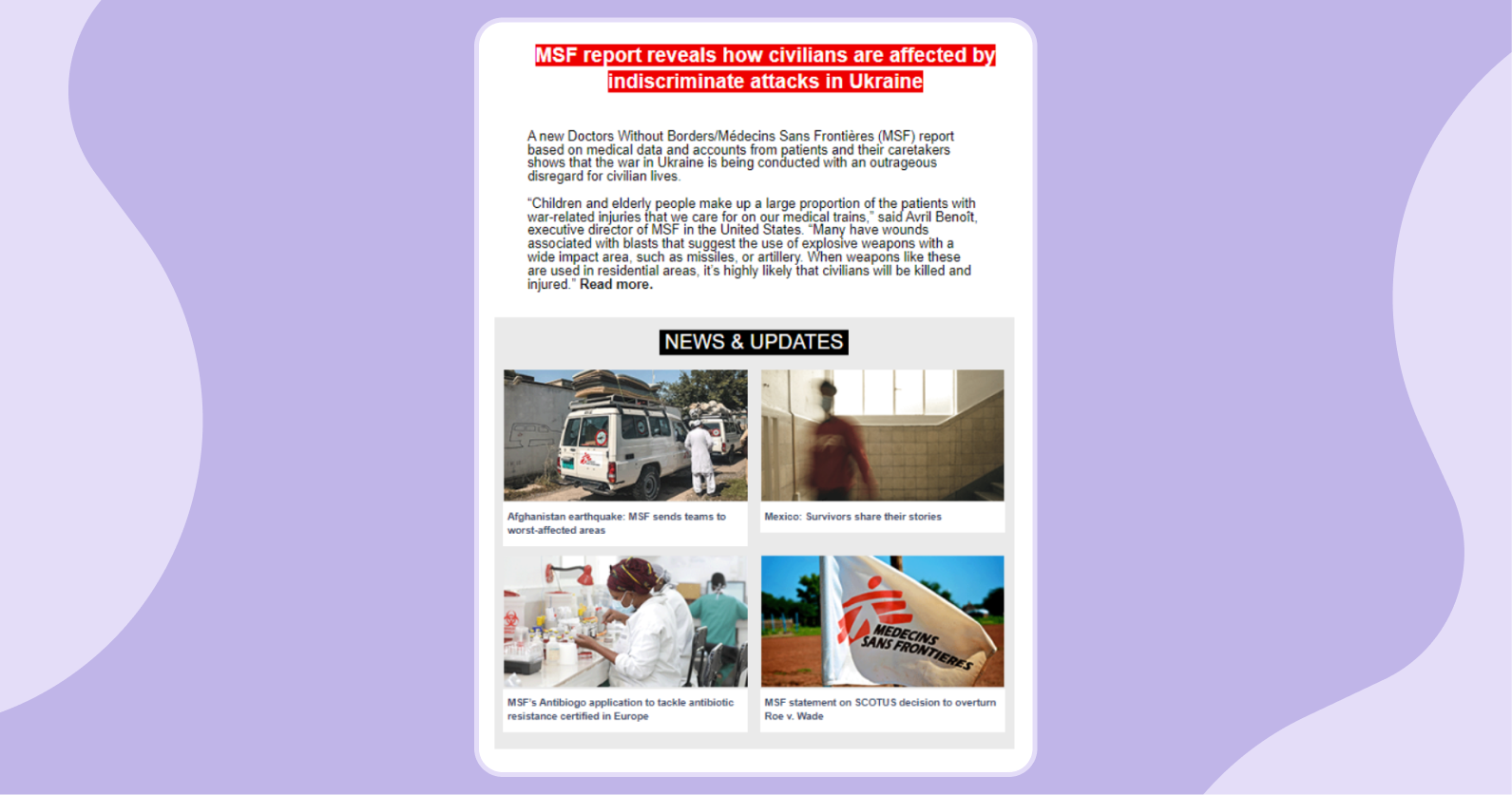
It’s also critical that you write quality content. Fact-check your claims and use images to keep your content engaging. You can also use writing software solutions to scale your content creation efforts. The software solutions may include grammar and content paraphrasing tools. These can help you create compelling newsletters at a faster rate.
By nurturing your email list with valuable information, you drive awareness. It also builds stronger relationships with donors.
4. Don’t send too many emails
Sending too many emails will hurt your fundraising campaign in so many ways. For starters, recipients may start ignoring your emails. Worse still, they may report your emails as spam.
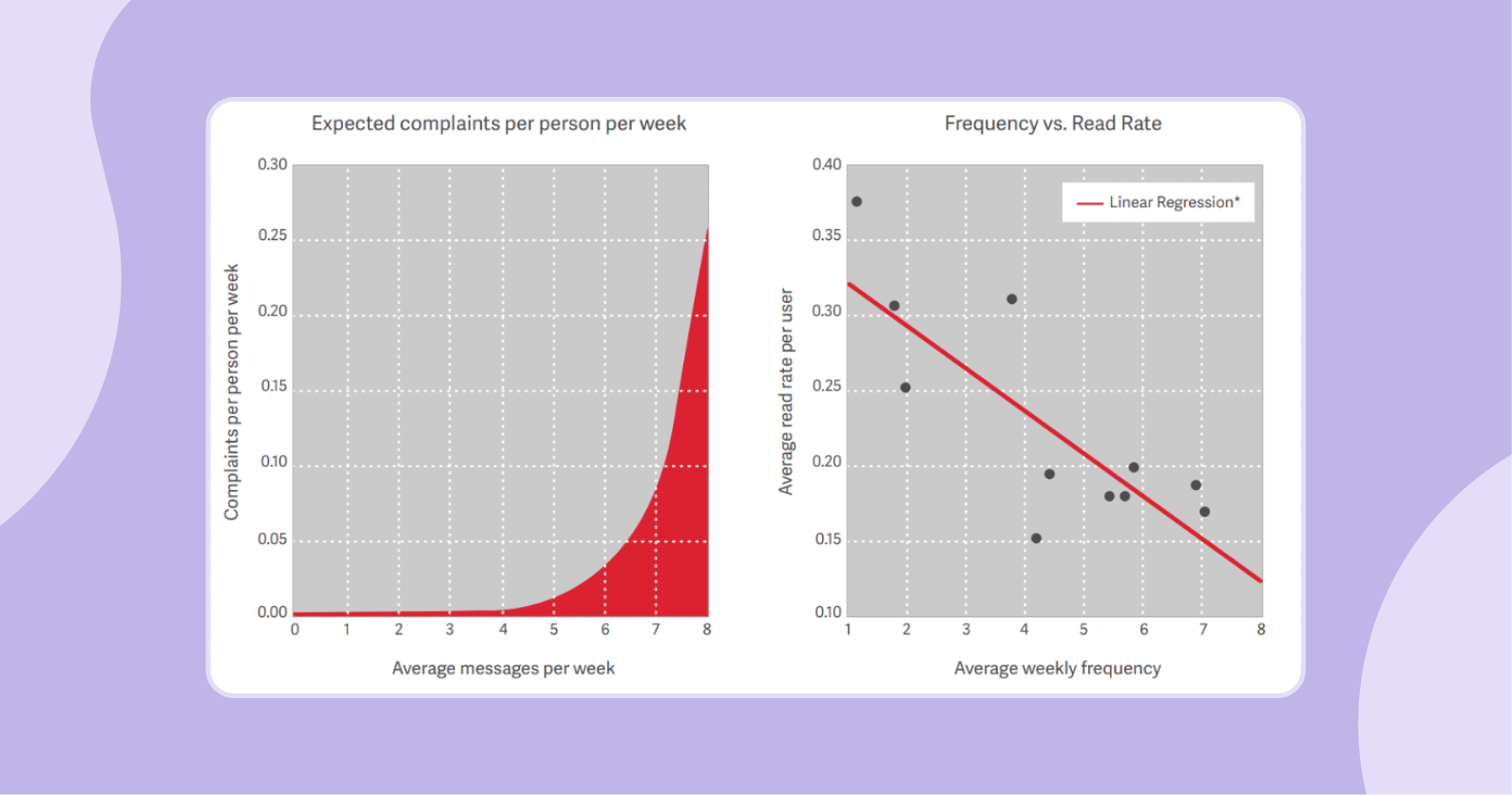
Sending fewer emails will give you a higher open rate, as shown in the linear regression above. When email providers, such as Gmail and Yahoo, see that a bulk of your emails aren’t getting opened (which would likely be the case if you send too many emails), your email deliverability will drop.
Ideally, you should send emails twice a week or once a month. This frequency also gives your content team enough time to create quality content.
Instead of sending too many emails, consider optimising your other fundraising channels. For example, you can use citations, keyword research, and build links to your site to rank better on SERPs. These methods will increase your blog’s reach and drive awareness of your cause.
5. Optimise for mobile readers
Mobile users accounted for 54% of nonprofit website traffic in 2021. That’s more than half of the traffic. This means that it’s also likely for users to access your fundraising emails using a mobile device. Therefore, you need to tweak your emails for them to be visible and decipherable on mobile devices.
Use smaller image file sizes to improve your newsletter’s load speed. Also, use a narrow, single-column design.
Here’s how the previous newsletter example looks on mobile. Notice how the information is more digestible on mobile.
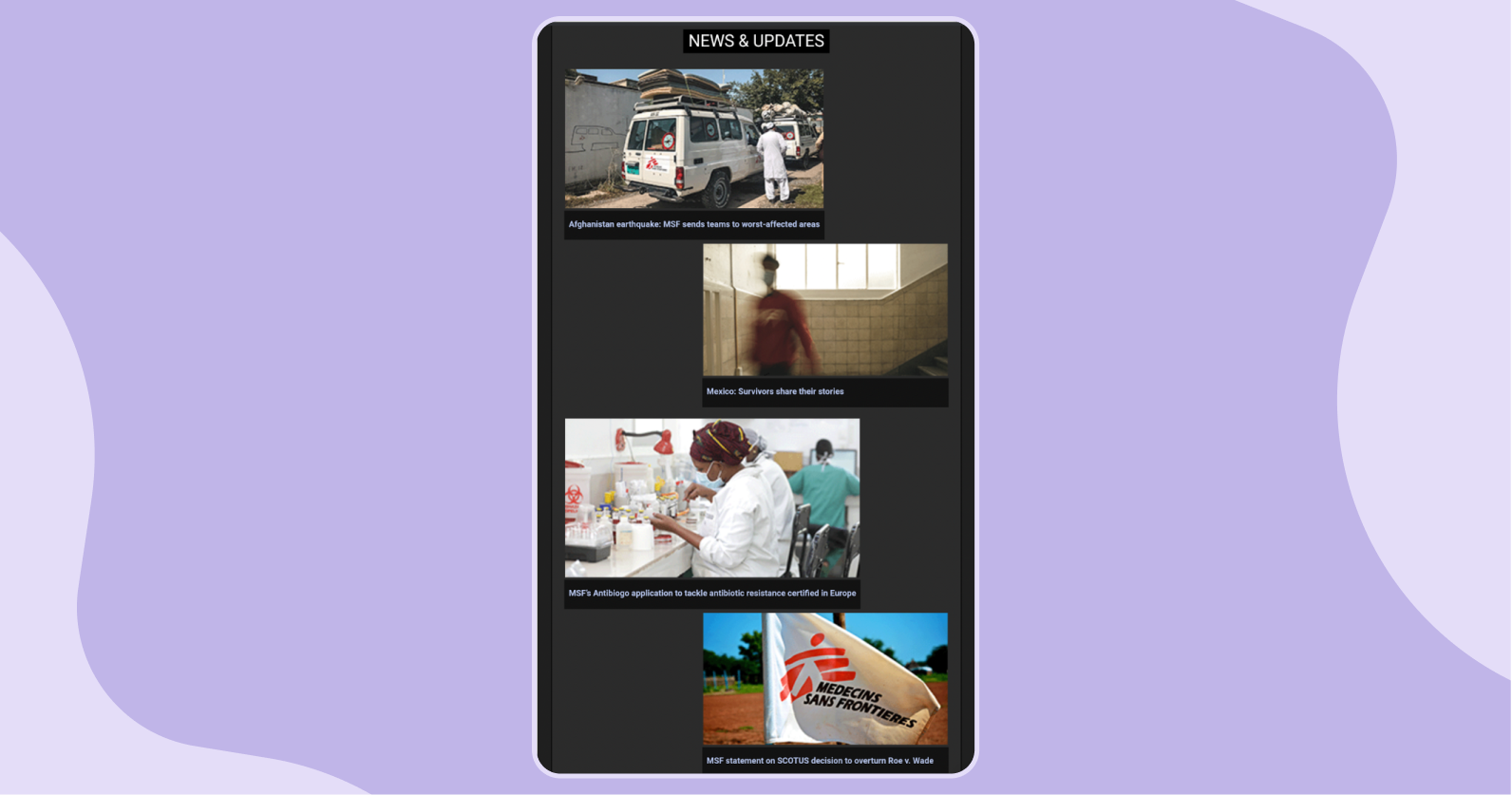
After you’ve created your newsletter, preview your content on mobile. You can spot any layout inconsistencies this way.
You can engage better with mobile clients by performing the above optimisations.
6. Personalise the emails
Since you’re asking for donations, warm up to your recipients. Approach them with a friendly tone. Personalise your emails so they don’t feel like they are part of a big crowd.
Fundraising through emails could involve sending cold emails to prospective donors or email blasts to a well-engaged email list. Personalisation for these methods will differ.
Cold emailing
If you have the contact details of experts, you may use this method.
Anchor your email to a recent event (i.e., “Congratulations on your five years in business!”). You may also heap praises on the work of the recipient (i.e., “I admire the work you have put in to mitigate climate change”).
After recognising their accomplishments, inform them of your cause. Tailor this to the awareness level of your recipient.
Suppose a representative of a charity addressing hunger emails an expert on climate change. If they want to ask for donations and support, a good cold email would be:
“I admire the work you put in to mitigate climate change.
I’m sure you’re well aware of climate change’s effects on agriculture. As a result, some sectors have been affected by food shortages and hunger…”
Don’t forget to include a CTA. This CTA may be asking for a donation or inviting them for a lunch meeting.
Personalised email blasts
Address each recipient on your email list by name. This will help create a personal connection with each prospective donor.
Email marketing tools can help you send bulk emails, each personalised to the recipient. For instance, Save The Children’s welcome message addresses recipients by name. It also includes a sign-off from the CEO, making the welcome letter feel warm and personal.
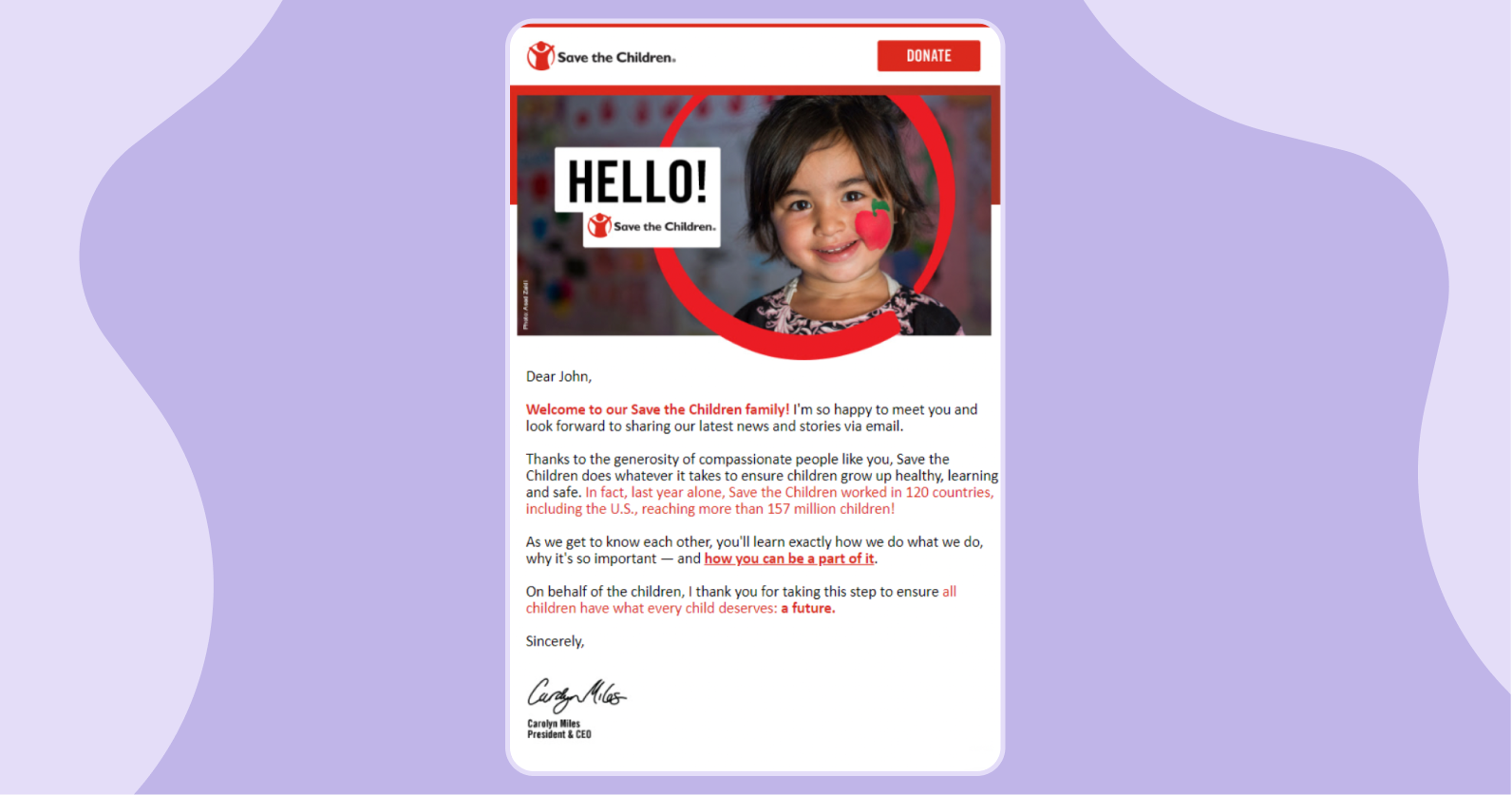
Also, make sure you’re creating unique, tailored content for each email segment. This helps you maximise engagement from your email list since you’ll be making newsletters relevant to them. You will also get more clicks on your call-to-action button.
You’ll earn more support for your nonprofit when you use these tips to write personal emails for your fundraising outreach.
7. Provide opt-in and unsubscribe buttons
It’s illegal to send marketing newsletters if a recipient hasn’t formally opted in to your email list. Nonprofits aren’t exempted from the law. You must ensure that everyone entering your mailing list has consciously agreed to receive newsletters.
That means you must have an opt-in option on your nonprofit website. The “opt-in to email newsletter” checkbox should be unticked by default if your website asks for a visitor’s email.
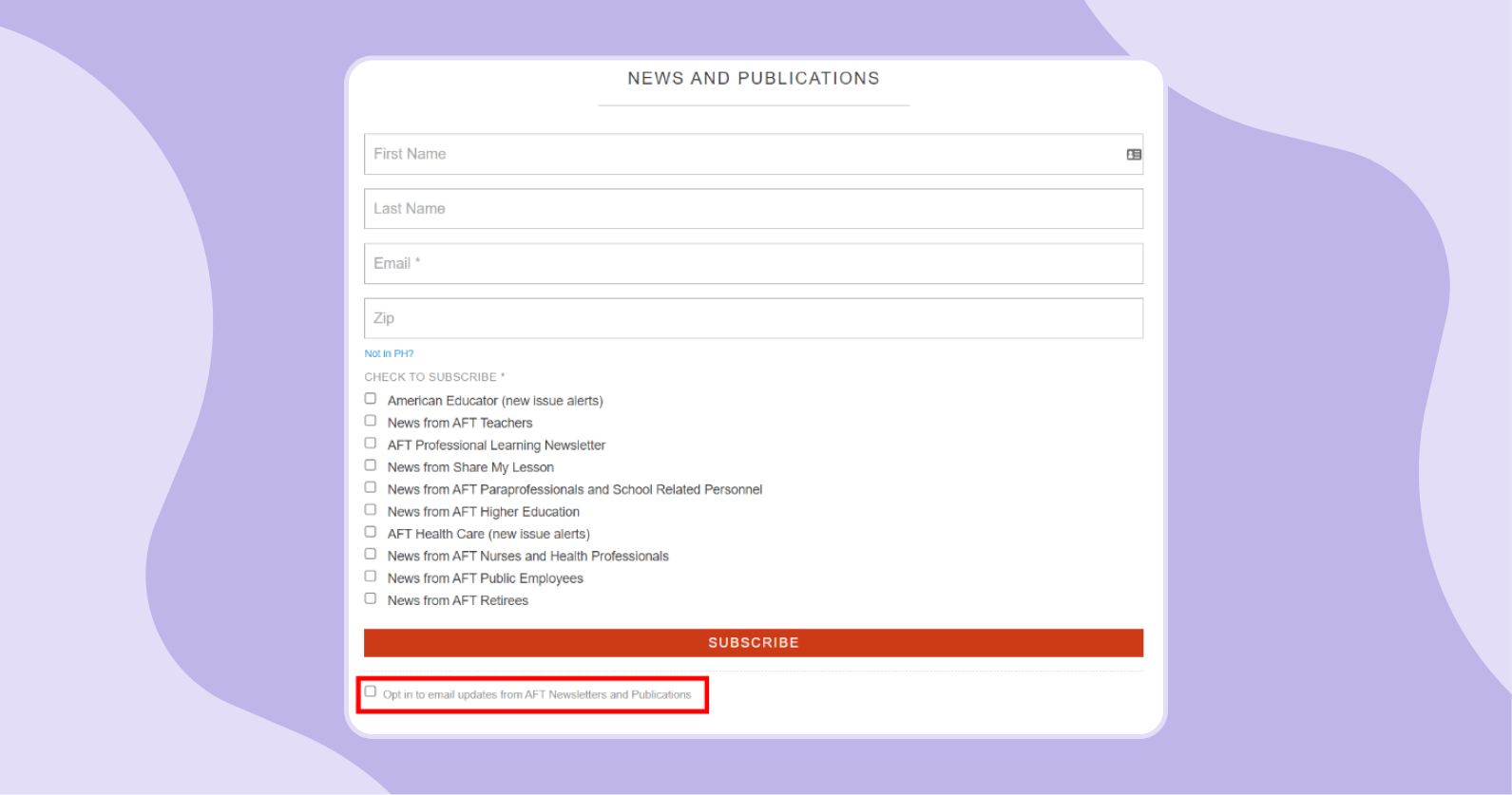
You should also provide a means for your subscribers to opt out. Place an unsubscribe button at the footer of your mail. All newsletters are required by law to provide the unsubscribe option.
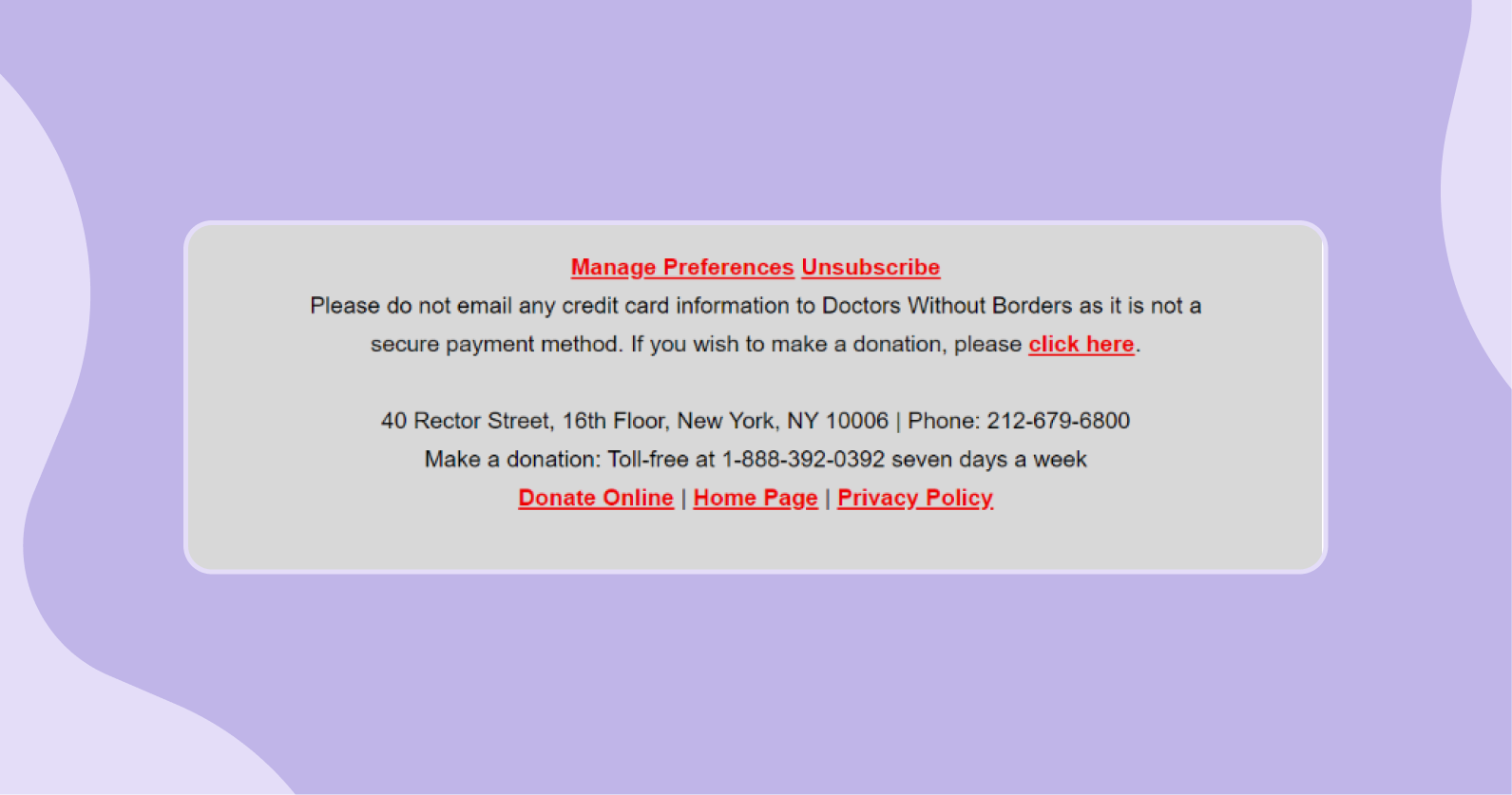
The unsubscribe button is your friend. It prunes your mailing list of any unengaged individuals. That helps you maintain a healthy email list.
In closing
You’ll need the public’s backing if you want to address a pressing social issue. To improve your donation drive through email marketing, you’ll need to follow several fundraising email best practices.
Make your subject lines eye-catching and use a real person’s name as your sender name. Segment your email list so that you can send relevant emails for each segment. Utilise stories and reports. Your email won’t be very compelling if all you do is send solicitation emails.
Don’t send too many emails. Instead, send emails once or twice every week for an optimal open rate. Also, personalise your emails to establish a personal connection. You can drive more action to your cause with this genuine messaging. Also, utilise opt-in and unsubscribe buttons for your email fundraising campaign.
Keep these fundraising email best practices in mind to drive more action to your cause. They’ll help boost your donations, allowing you to meet your fundraising goals quicker.
Stay in the loop. Delivered to your inbox twice a month.

Daryl Bush is the Business Development Manager at Authority.Builders with extensive knowledge of SEO. He helps businesses acquire more customers through improved online search rankings.
